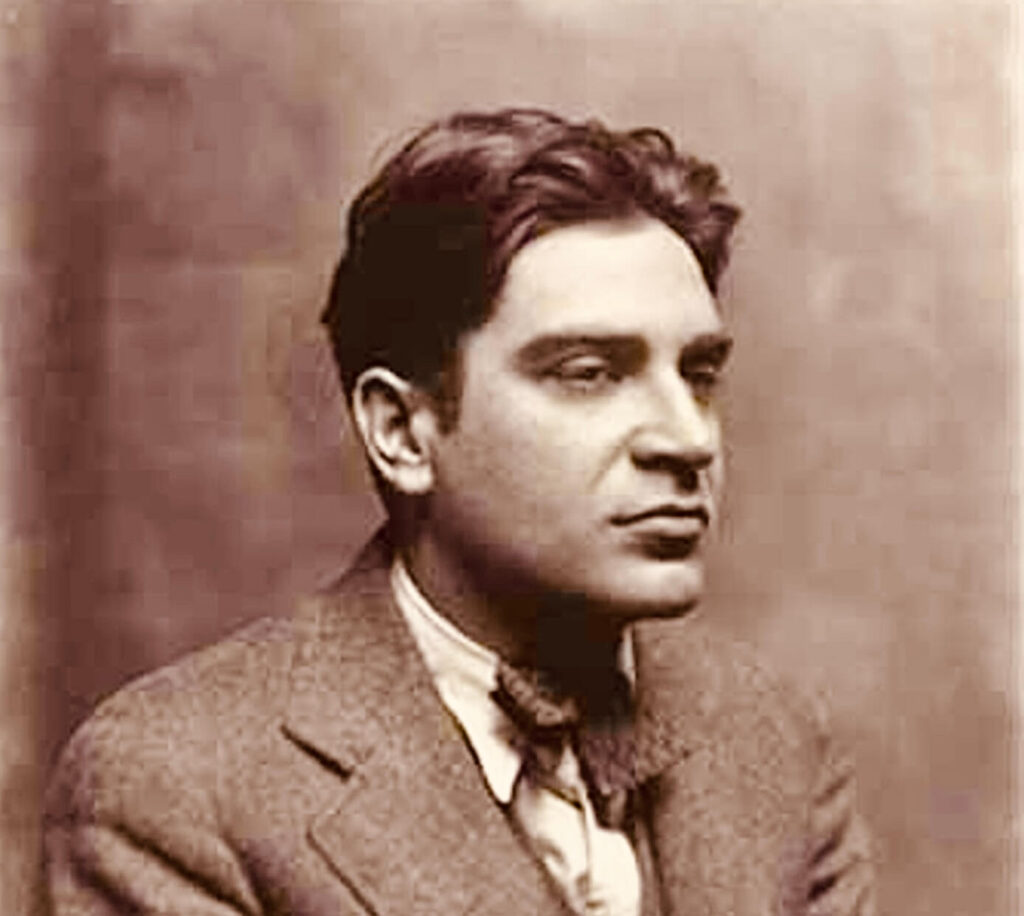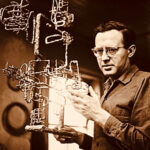Reuben Nakian
Reuben Nakian (1897-1986) was an American sculptor celebrated for his dynamic and often monumental works that bridged classical mythology and modern abstraction. Over a career spanning more than six decades, Nakian created an extensive body of work that reflected his deep engagement with ancient themes and contemporary artistic movements. His sculptures are characterized by their robust forms, expressive energy, and the profound sense of myth and history they convey.

Early Life and Education
Reuben Nakian was born on August 10, 1897, in College Point, New York, to Armenian immigrant parents. His early exposure to his father’s craftsmanship as a shoemaker fostered a love for the tactile and physical aspects of making art. Nakian’s formal education began at the Art Students League of New York, where he studied under prominent artists such as Homer Boss and Paul Manship, both of whom influenced his early work.
After his time at the Art Students League, Nakian furthered his studies at the Robert Henri School, known for its progressive approach to art education and emphasis on individual expression. These formative experiences provided Nakian with a strong foundation in both traditional techniques and modern artistic principles, setting the stage for his later explorations.
Early Career and Influences
In the 1920s and 1930s, Nakian’s work was influenced by the prevailing trends in American sculpture, which included both the classical traditions of realism and the emerging currents of modernism. He worked for a time as an assistant to Paul Manship, whose neoclassical style and interest in mythological subjects left a lasting impression on Nakian. This period also saw Nakian engaging with the works of other modernist sculptors such as Constantin Brâncuși and Aristide Maillol, whose simplified forms and emphasis on essential shapes resonated with him.
Nakian’s early works, such as busts and small figures, were rooted in the classical tradition but already hinted at his growing interest in abstraction and the expressive potential of form. He participated in several group exhibitions during this time, gradually gaining recognition within the New York art scene.
Mature Style and Mythological Themes
The 1940s marked a significant turning point in Nakian’s career as he began to develop the distinctive style for which he would become known. This period saw him moving away from traditional realism towards a more abstract and dynamic approach to form. His sculptures from this time are characterized by their vigorous lines, bold shapes, and a sense of movement that conveys the inner vitality of his subjects.
Nakian’s mature work is deeply rooted in mythology, particularly the myths of ancient Greece and Rome. He was fascinated by the timeless themes of love, power, heroism, and transformation that these myths embodied. By reinterpreting these stories through a modern lens, Nakian sought to explore the universal aspects of human experience and the enduring power of myth.
One of Nakian’s most significant works from this period is “Leda and the Swan” (1942), a sculpture that exemplifies his ability to merge classical themes with modernist aesthetics. The work depicts the mythological story of Leda’s encounter with Zeus, who has taken the form of a swan. Nakian’s interpretation is both sensual and dynamic, with swirling forms and interlocking shapes that capture the drama and intensity of the scene.
Important Artwork: “Hiroshima” (1967)
One of Nakian’s most powerful and important works is “Hiroshima” (1967), a large-scale bronze sculpture that reflects his engagement with contemporary events and his ability to infuse his work with profound emotional and philosophical depth.
“Hiroshima” (1967)
“Hiroshima” stands as a monumental testament to the horrors of war and the resilience of the human spirit. The sculpture, approximately 10 feet tall, is a dramatic and abstract representation of the devastation wrought by the atomic bomb dropped on Hiroshima in 1945. It was created during a period when Nakian was increasingly concerned with the existential threats of the nuclear age and the moral responsibilities of humanity.
The composition of “Hiroshima” is dominated by a chaotic and tumultuous mass of forms, which evoke the destructive force of the explosion and the ensuing chaos. Nakian’s use of rough textures and jagged lines conveys a sense of violence and anguish, while the upward thrusting shapes suggest a striving for transcendence and renewal.
At the heart of the sculpture is a central figure that can be interpreted as a symbol of humanity amid the destruction. This figure, though abstract, carries a poignant sense of suffering and endurance, embodying the collective trauma and hope of the survivors. Nakian’s ability to balance abstraction with emotional resonance makes “Hiroshima” a compelling and moving work.
“Hiroshima” is significant not only for its artistic merits but also for its historical and cultural context. Created during the height of the Cold War, the sculpture reflects Nakian’s deep concern for the future of humanity and his belief in the redemptive power of art. It stands as a powerful reminder of the destructive capabilities of modern technology and the need for compassion and understanding in the face of such threats.
Later Career and Recognition
In the later years of his career, Nakian continued to explore mythological themes while also experimenting with new materials and techniques. His works from this period are characterized by their monumental scale and their bold, expressive forms. He often used bronze and terracotta, which allowed him to achieve a range of textures and effects that enhanced the dynamic quality of his sculptures.
Nakian’s contributions to modern sculpture were increasingly recognized during his lifetime. He received numerous awards and honors, including a Guggenheim Fellowship in 1964. His works were exhibited in major museums and galleries, and he participated in important group exhibitions alongside some of the leading artists of his time.
In addition to his public commissions, Nakian’s works were acquired by prominent institutions such as the Museum of Modern Art in New York, the Whitney Museum of American Art, and the Smithsonian American Art Museum. These acquisitions reflect the enduring significance of his work and its impact on the development of modern sculpture.
Legacy and Influence
Reuben Nakian’s legacy as a sculptor lies in his ability to bridge the ancient and the modern, creating works that are both timeless and contemporary. His deep engagement with mythological themes and his innovative approach to form and material have left a lasting impact on the field of sculpture.
Nakian’s influence can be seen in the works of subsequent generations of artists who have been inspired by his bold and expressive style. His ability to convey complex emotions and ideas through abstract forms continues to resonate with viewers and artists alike. By reinterpreting classical myths in a modern context, Nakian has contributed to a broader understanding of the relevance and power of these stories in contemporary culture.
Personal Life and Philosophy
Nakian’s personal life was marked by his dedication to his art and his passion for exploring the connections between the past and the present. He maintained close relationships with many of his contemporaries, including artists such as Willem de Kooning and Arshile Gorky, who shared his interest in abstraction and the expressive potential of form.
Nakian’s artistic philosophy was rooted in a belief in the transformative power of art. He viewed sculpture as a means of exploring the deeper truths of human experience and the enduring power of myth. This approach is evident in the vitality and dynamism of his works, which continue to engage and inspire viewers.
Despite facing periods of financial difficulty and critical indifference, Nakian remained committed to his artistic vision. His perseverance and dedication to his craft are reflected in the body of work he created, which stands as a testament to his talent and his belief in the importance of art.
Conclusion
Reuben Nakian’s artistic journey is a testament to his creativity, resilience, and profound understanding of form and material. Through his innovative approach to sculpture, he created a body of work that continues to inspire and challenge viewers. “Hiroshima,” one of his most important works, exemplifies his ability to convey complex ideas and emotions through abstract means.
In celebrating Reuben Nakian’s life and work, we recognize his significant contributions to the development of modern sculpture and his enduring legacy as an artist who bridged the ancient and the modern. His sculptures remain powerful and evocative, reminding us of the potential of art to transform our perceptions and engage with the fundamental questions of existence. Nakian’s exploration of myth and form continues to resonate, inviting us to contemplate the deeper truths of human experience.



